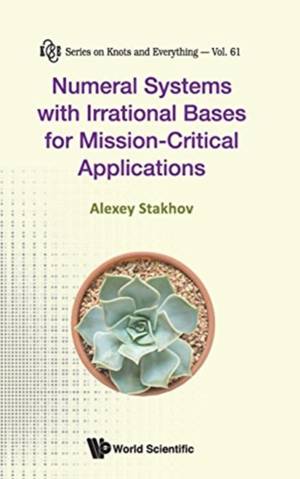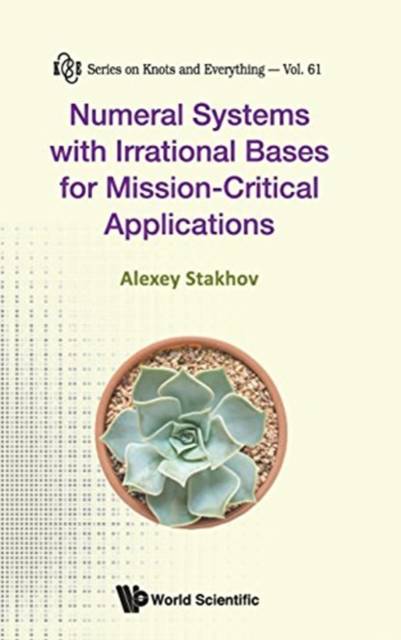
- Afhalen na 1 uur in een winkel met voorraad
- Gratis thuislevering in België vanaf € 30
- Ruim aanbod met 7 miljoen producten
- Afhalen na 1 uur in een winkel met voorraad
- Gratis thuislevering in België vanaf € 30
- Ruim aanbod met 7 miljoen producten
Zoeken
Numeral Systems with Irrational Bases for Mission-Critical Applications
Alexey Stakhov
€ 180,45
+ 360 punten
Omschrijving
This volume is the result of the author's many-years of research in this field. These results were presented in the author's two books, Introduction to the Algorithmic Measurement Theory (Moscow, Soviet Radio, 1977), and Codes of the Golden Proportion (Moscow, Radio and Communications, 1984), which had not been translated into English and are therefore not known to English-speaking audience. This volume sets forth new informational and arithmetical fundamentals of computer and measurement systems based on Fibonacci p-codes and codes of the golden p-proportions, and also on Bergman's system and 'golden' ternary mirror-symmetrical arithmetic. The book presents some new historical hypotheses concerning the origin of the Egyptian calendar and the Babylonian numeral system with base 60 (dodecahedral hypothesis), as well as about the origin of the Mayan's calendar and their numeral system with base 20 (icosahedral hypothesis). The book is intended for the college and university level. The book will also be of interest to all researchers, who use the golden ratio and Fibonacci numbers in their subject areas, and to all readers who are interested to the history of mathematics.
Specificaties
Betrokkenen
- Auteur(s):
- Uitgeverij:
Inhoud
- Aantal bladzijden:
- 284
- Taal:
- Engels
- Reeks:
- Reeksnummer:
- nr. 61
Eigenschappen
- Productcode (EAN):
- 9789813228610
- Verschijningsdatum:
- 8/12/2017
- Uitvoering:
- Hardcover
- Formaat:
- Genaaid
- Afmetingen:
- 152 mm x 229 mm
- Gewicht:
- 548 g

Alleen bij Standaard Boekhandel
+ 360 punten op je klantenkaart van Standaard Boekhandel
Beoordelingen
We publiceren alleen reviews die voldoen aan de voorwaarden voor reviews. Bekijk onze voorwaarden voor reviews.











